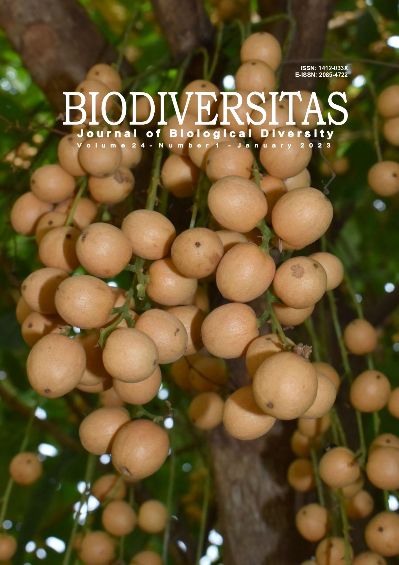Phenology of flowering and seed development of jernang rattan (Daemonorops spp.)
##plugins.themes.bootstrap3.article.main##
Abstract
Abstract. Fridayanti N, Widajati E, Ilyas S, Budi SW, Palupi ER. 2023. Phenology of flowering and seed development of jernang rattan (Daemonorops spp.). Biodiversitas 24: 349-358. Jernang rattan has a high economic value due to its resin content in the exocarp, as the raw material of dyes, medicines, and cosmetics. The resin is highest in the immature fruit skin (exocarp); therefore, fruits are harvested before the seed is germinable. As a consequence, regeneration is very scarce, and the species is categorized as a rare plant. This research was aimed at investigating the flowering phenology and seed development of jernang rattan until they reach physiological maturity, when the viability and vigor are at their highest. The flowering phenology was observed based on Biologische Bundesanstalt Bundessortenamt and Chemische Industrie (BBCH), at the inflorescence stage, flowering stage, fruit development stage, and fruit ripening stage. The inflorescence development from flower bud until ready to bloom took 136.4 ±10.9 days for male plants and 141.6 ±16.4 days for female plants. The inflorescence of staminate flowers bloomed longer (29.4 ±2.7 days) than pistillate flowers (15.4 ± 4.0 days). Fruit abortion mostly occurs during the first six months of fruit development, coincides with the nuclear stage of endosperm, and the final seed set is 56%. It takes around 27 months of one reproduction cycle from the appearance of the inflorescence to seed maturity. The fruit reaches physiological maturity approximately at 22 MAA when the seed is of high viability and vigor, and harvesting at 22 MAA is best for seed production. It is recommended to set up a seed production area separated from the resin production area.

